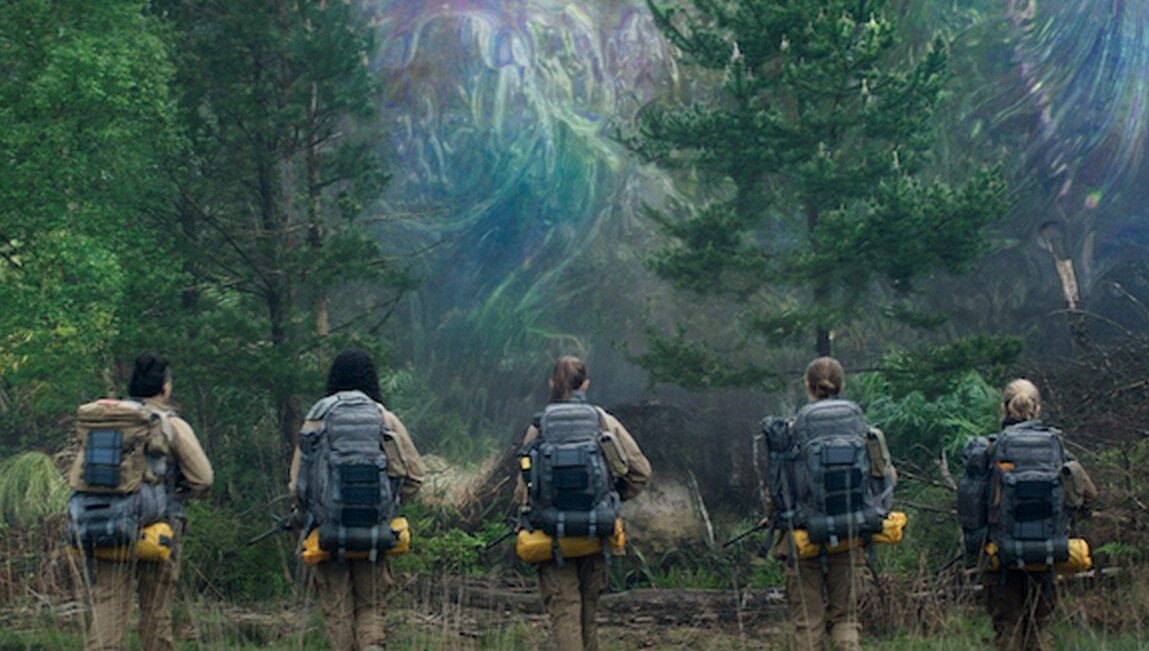An overhead shot tracks a car’s snaking glide down a mountain road as a turquoise lake looms below. Credits appear, and the score begins to brood something like The Shining’s “Dies irae,” before revealing itself as an orchestral pop cover of Robert Johnson’s “Me and the Devil Blues.” “And I said hello Satan, I believe it’s time to go,” the vocal croons as the sweeping scenery churns. The cold open that precedes this bit of icy dread is actually red hot, all screams and fire as Adèle Exarchopoulos stares back at us in disbelief, her face hued in crimson — revealed as an image from a little girl’s nightmare — or was it something else?
This is how Léa Mysius (who made her exhilarating feature debut Ava in 2017 and has since been collaborating with the likes of Téchiné, Desplechin, Audiard, and Denis) sets the stage for her directorial return with The Five Devils. If Mysius’ screenwriting work across a French auteur bingo card betrays a chameleon-like adaptability, her directorial efforts carry an unmistakably auteurist stamp. Together with DP and writing partner Paul Guilhaume, she crafts textured coming-of-age stories where characters slip into flights of fantasy injected with pop, or sometimes into other genres altogether, amidst the glow of bright, expressionistic color palettes.
The opening nod to The Shining is telling, as there is a good bit of off-kilter menace that rings more like horror here than the sense of futility that gave Ava its somber undercurrent. Out of her peers, Mysius’ wavelength may most closely resemble the work of Céline Sciamma, with a special focus on girls and young women yearning, searching, and discovering themselves in the process. Fragments here and there recall Water Lilies, Girlhood, and most obviously, the mother-daughter time-bending of Petite Maman. But there are also flashes of Lynch-tinged discomfort and meticulous interlocking symbols and allegorical modes hinting in the direction of Jordan Peele.
Whatever the proportions of this concoction, Mysius prepares it with overwhelming confidence, delivering the story of Vicky (Sally Dramé), a young girl who yearns to understand her detached mother, Joanne (Adèle Exarchopoulos), and who, much like in Petite Maman, is aided on her quest by metaphysical means. The arrival of her mysterious aunt Julia (Swala Emati) is as disruptive as it is revelatory, opening up a pathway into the mystery of Vicky’s mother’s past, a buried secret that the young girl begins to piece together through her journey across time.
The twist here is that Vicky’s window to time travel is olfactory: a mysterious potion bottle from Julia’s bag forms a scent so potent that it, fueled by our young protagonist’s hyperosmia, allows brief sojourns into the past. These segments, which essentially find Vicky waking up within flashbacks, flesh out Joanne and Julia’s backstory, a love affair between the two that ends with the traumatic inferno of the opening shot. After this, Joanne will go on to marry Julia’s brother, Jimmy (Moustapha Mbengue), and settle down, while Julia disappears from the picture altogether until her sudden return, which sets off the action of the film.
In a way, what Mysius accomplishes here with Joanne’s narrative is an inversion of the conservative underpinnings of Back to the Future, wherein Marty McFly must fix the past in order to save himself, restore his father’s masculinity, and preserve the traditional nuclear family unit. In her own way, Vicky faces the same existential threat as Marty, understanding that her origin is predicated on a sequence of events in danger of swinging the other way. Unlike Marty, however, she is forced to confront an uncomfortable truth: that perhaps her very existence is the outcome of a devastating mistake.
The intricate interplay of past and present, mother and daughter, old lovers, and a betrayed friendship is woven together by Mysius with an assured sense of ease. Deeper within these intertwining narratives flows an undercurrent theme of racial identity. Vicky’s Blackness is a source of racist bullying at her predominantly white school, and so as a coping mechanism, she clings to her white mother, Joanne, and is distant to her Black father, Jimmy. Her hostility toward her aunt, Jimmy’s sister, encapsulates her alienation from this part of herself; thus, as the story progresses and Vicky journeys to understand and accept Julia’s place in her mother’s backstory, she is simultaneously able to see her aunt fully and understand the connective tissue that unites the two of them just as strongly. Indeed, though Mysius may conduct this symphony, the film hinges on the young Dramé’s sophisticated performance grounding these difficult ideas and symbols within her minute gestures, and the empathetic pull of her expressive gaze.
Of course, just as in Ava, Mysius and Guilhaume take care to build out a cinematic playground on which the story unfolds, including quite a few dazzling sequences punctuated by remarkable fragments of pop. And much like last year’s Aftersun, The Five Devils gets tremendous mileage out of an outsized ‘80s classic that by all means and measures should feel exhausted and spent by now, yet somehow roars back to life here, driven by adept cinematography and what is seemingly nothing less than the song’s primordial power. The very same could likely be said for the whole of The Five Devils itself; from the over-ambitious script, to the odd genre-bending, to the unapologetic dedication to its conceit, it’s hard to anticipate all of this working. But once again, under Mysius’ careful watch, everything just clicks. Not only is it obvious from this second feature that Ava was no fluke, but it’s clear that the concoctions she’s crafting are only getting more potent.
Published as part of InRO Weekly — Volume 1, Issue 12.







